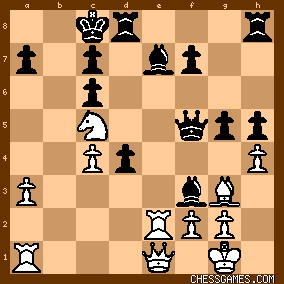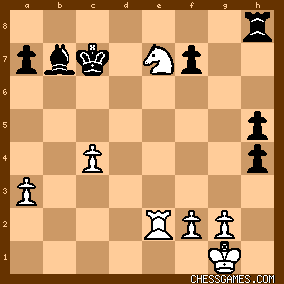| offramp: Alekhine annotated this game in Game Collection: "107 Great Chess Battles: 1939-1945" by Alekhine. It is a fascinating encounter with a very complicated middle sequence. Black plays 17...Bg4.

click for larger view
Black is a pawn up (the pawn white gave up in this Scotch Gambit) and looks to be doing quite well; he has already made contact with his kingside pawns. White hurries to continue the pawn storm of his own and plays 18.c4! <Alekhine: Well played! If 18...Qxc4 then simply 19.Ned2 and white wins two pieces for the rook>. There follows 18...Qf5 19.b5 (<Me: an alternative is 19.Bxc7 followed by Ng3 ΔRxe7,Nxf5  >) and now 19...Bxf3. >) and now 19...Bxf3. 
click for larger view
Oddly, this bishop stays en prise on f3 for 9 moves.
White plays 20.bxc6! A crucial moment. Should black now have played the simple recapture 20...bxc6? White would have replied 21.Nc5 - 
click for larger view - and that's complicated. Instead, after 20...d3, the game simplified quite quickly. After 20...d3

click for larger view
And 7 moves later after 27...gxh4:

click for larger view21...Kb8 seems to have been a miscalculation; it loses a tempo. Did Keres miss 22.Bxc7+? Keres does not play well after about move 30. Perhaps he was in time trouble. In the final position 
click for larger view he is a pawn down. But his opponent, who had played so very well throughout, offered him a draw! | 




